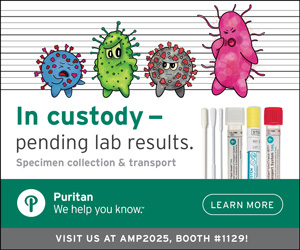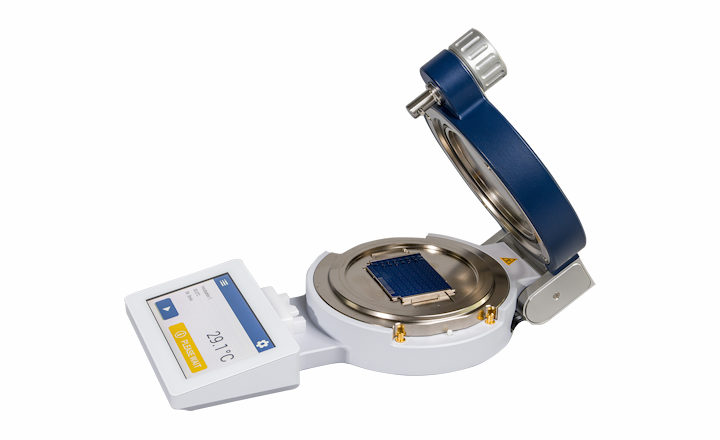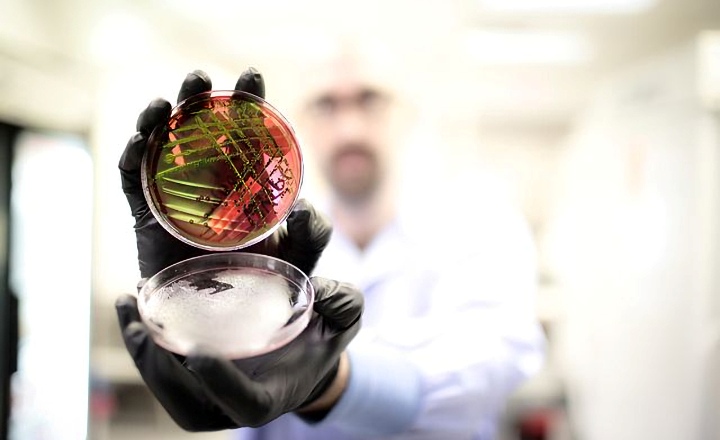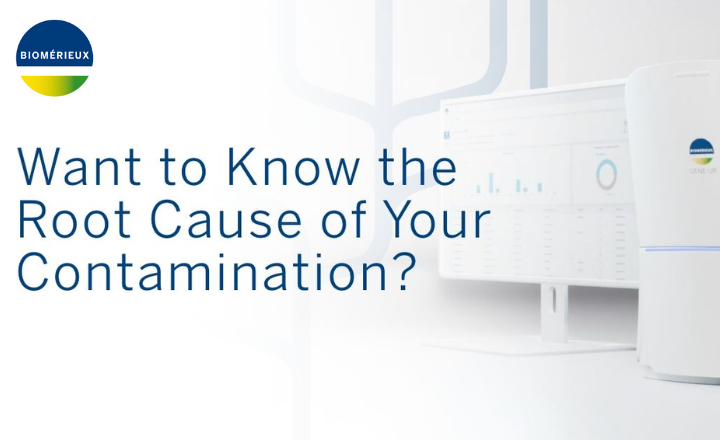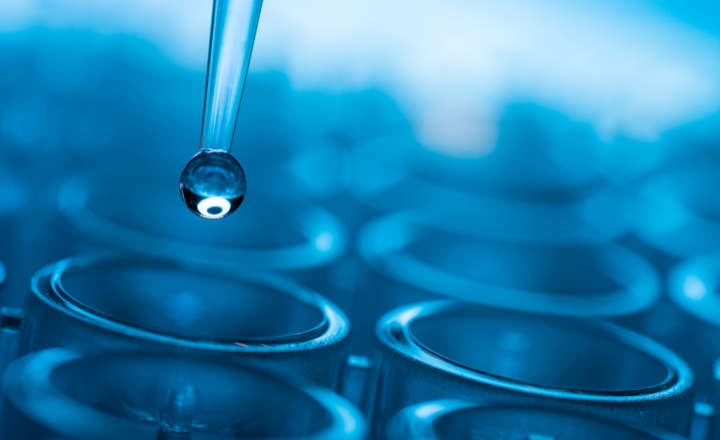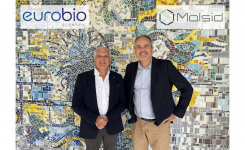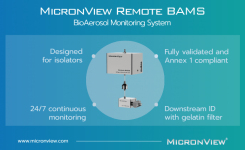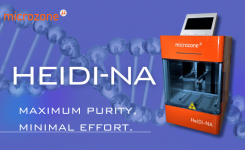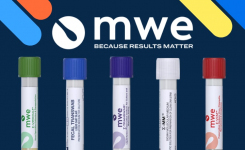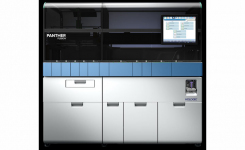At the American Society for Microbiology (ASM) Microbe 2018 meeting, Bruker announced improved solutions for microbial strain typing, hospital hygiene and infection control.
Bench-top IR Biotyper System for Microbial Strain Typing The bench-top IR Biotyper system for microbial strain typing is based on Fourier-Transform Infrared (FTIR) spectroscopy technology, and complements Bruker’s world-leading MALDI Biotyper mass spectrometry platform for fast microbial identification from cultures using protein fingerprinting. The IR Biotyper uses many classes of biomolecules, like lipids, proteins, nucleic acids and polysaccharides simultaneously to characterize a microbial sample by strain-specific absorbance patterns in the infrared spectrum. This makes the IR Biotyper an efficient tool for fast and cost-effective strain typing. The IR Biotyper can be used stand-alone for routine hospital hygiene and infection control, or can be combined in a workflow with parallel microbial species identification by the MALDI Biotyper. Due to its fast time-to-result (TTR), excellent strain differentiation performance, low cost per sample, ease of use, robustness and throughput, the IR Biotyper can perfectly complement next-generation sequencing (NGS) strain typing, which typically requires more time, training and infrastructure in core labs.
The IR Biotyper is easy to use without any prior knowledge of FTIR technology. Its workflow uses colonies from an agar plate, typically after overnight incubation. The assay needs only minimal hands-on time supported by the IR Biotyper Kit that allows standardized and straight-forward sample preparation, and contains proprietary test standards for quality control. Each sample is measured in a few minutes. The IR Biotyper software offers a simple user interface for the set-up of automated, unattended runs. The software also includes data interpretation with optimized statistical algorithms and provides clear visualization of the results, for example, as a distance matrix, or as a dendrogram of multiple isolates. The new IR Biotyper 2.0 software now offers further enhanced bioinformatics capabilities via novel algorithms, connectivity to external expert systems via data export functions, and improved data visualization.
With its easy, user-friendly workflow, fast turn-around time and cost-effective sample preparation, the IR Biotyper enables new in-house workflows in hospital infection control. More samples can be analyzed prospectively in less time and at a lower cost compared to molecular technologies in hygiene laboratories. Results are generated directly after the measurements. This also improves sample logistics as many samples that previously had to be sent to central core molecular testing facilities can now be analyzed directly in the hospital hygiene laboratory. The IR Biotyper is for research-use-only and not for diagnostic use. Two scientific posters showing the performance of the IR Biotyper in an outbreak analysis and for the detection of virulence factors in the zoonotic pathogen Arcobacter butzleri will be presented at this ASM Microbe meeting.
Dr. Stefan Zimmermann, Department of Medical Microbiology and Hygiene at the University Hospital Heidelberg, Germany, stated: “We have implemented the IR Biotyper since several months in our laboratory. The IR Biotyper has shown to be a promising tool for rapid and reliable outbreak analysis. In our hands, it showed good concordance with previous typing methods, like pulse-field gel electrophoresis and RAPD-PCR. Its easy handling and short time to result enables routine screening and outbreak prevention. Moreover, the cost-efficient IR Biotyper approach enables research projects in epidemiology with large sample cohorts that previously were not feasible in practice. In addition, we envision further applications like the detection of virulent strains in the future.”
FDA clearance for Candida auris identification with the MALDI Biotyper® Bruker recently received clearance from the U.S. Food and Drug Administration for the identification of C. auris (www.fda.gov) on the MALDI Biotyper CA system. Candida auris is a yeast species that increasingly causes fungal infections in critically ill hospital patients. It can cause blood stream infections, urinary tract infections and wound infections. Treatment can be complicated because it can easily be misidentified as other Candida species by traditional methods. C. auris is frequently multidrug-resistant and has caused several outbreaks in healthcare settings.
C. auris will be added to the MBT CA system’s cleared reference library, which now contains 334 species or species groups, covering 425 clinically relevant bacteria and yeast species. According to the FDA press release, this is “the first test to identify the emerging pathogen Candida auris, which can cause serious infections in hospitalized patients.” The C. auris identification by a FDA-cleared method does not only help individual patients with an important diagnosis, but it enables direct screening and hygiene measures in order to prevent further spreading of the organism.
Dr. Wolfgang Pusch, Executive Vice President for Microbiology & Diagnostics at Bruker Daltonics, commented: “It is a proven strength of the MALDI Biotyper system and identification algorithms that emerging pathogens, such as Candida auris, can easily be added to its reference library. We are very pleased with this early clearance of the C. auris claim by the FDA in order to make this significant improvement available to the US healthcare system relatively quickly.”
Bruker MALDI Biotyper (MBT) Platform The MALDI Biotyper family of systems enables molecular identification of microorganisms like bacteria, yeasts and fungi. Classification and identification of microorganisms is achieved reliably and quickly using proteomic fingerprinting by high-throughput MALDI-TOF mass spectrometry. The MALDI Biotyper uses a molecular approach based on specific proteomic fingerprints. Many published studies have highlighted its greater accuracy and lower cost, as well as typically much faster time-to-result (TTR).
Applications include clinical routine microbial identification, environmental and pharmaceutical analysis, taxonomical research, food and consumer product safety and quality control, as well as marine microbiology. In many laboratories the MALDI Biotyper has replaced classical biochemical testing for bacterial identification due to the accuracy, speed, extensive species coverage, ease of use and cost effectiveness of the system. Traditional biochemical techniques detect different metabolic properties of microorganisms, can take many hours or even days for completion, and they often lack specificity.
The robust MALDI Biotyper requires minimal sample preparation and offers low consumables cost. The products of the MALDI Biotyper family are available in a research-use-only (RUO) version, as the U.S. FDA-cleared MALDI Biotyper CA System, or in an IVD-CE version according to EU directive EC/98/79. The MALDI Biotyper also has medical device registrations in numerous other countries. RUO versions of the MALDI Biotyper allow selected, high-value antimicrobial resistance tests.
Bruker IR Biotyper Platform The IR Biotyper is a benchtop FTIR spectroscopy system for hospital hygiene and infection control applications. It used the absorption of infrared light by biomolecules, as infrared light induces vibrations and rotations of covalent bonds in biomolecules. Using this principle, the IR Biotyper simultaneously analyses various classes of biomolecules, such as peptides, proteins, carbohydrates and lipids. The resulting spectrum is a molecular fingerprint of the cellular content. This allows robust differentiation between microbial isolates. After an identification of the microbial species with the MALDI Biotyper, the IR Biotyper allows for rapid, cost-effective typing of strains.
Applications include the analysis of outbreak scenarios in hospital hygiene and epidemiology, as well as root cause analysis in microbial food contamination. The IR Biotyper offers low consumables cost, and requires minimal sample preparation. Starting from an isolated culture on an agar plate, a cell suspension is prepared and an aliquot is deposited on the sample plate and air dried. The measurement itself takes a few minutes. After microbial cultivation, the IR Biotyper allows for quick onsite analysis in the hygiene monitoring laboratory, which compares very favorably with the cost and turn-around time to send samples for molecular testing. The IR Biotyper is for research-use-only (RUO) in hygiene, infection control and epidemiology.
Visit www.bruker.com


